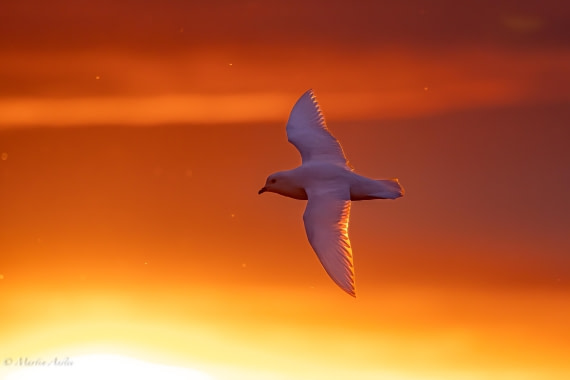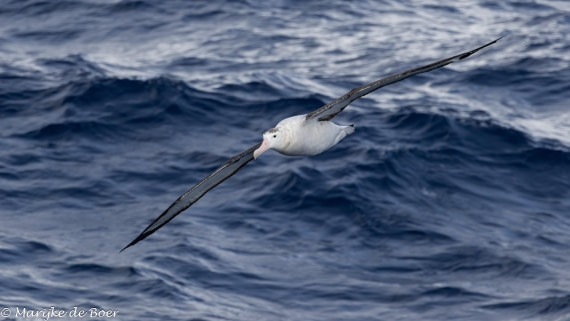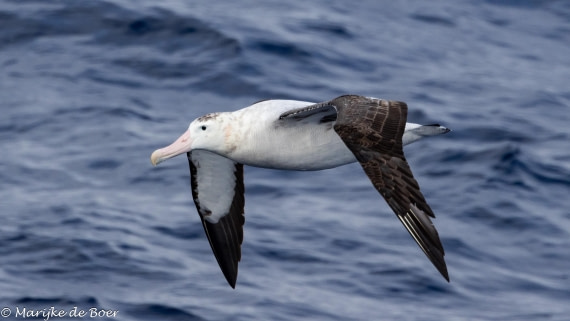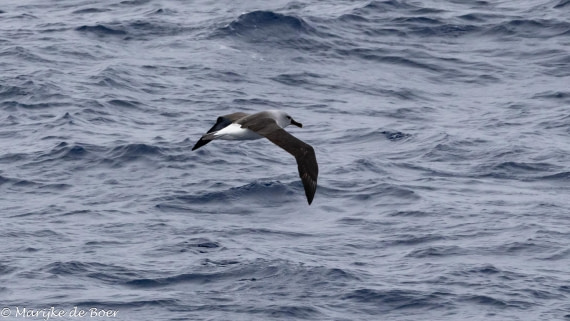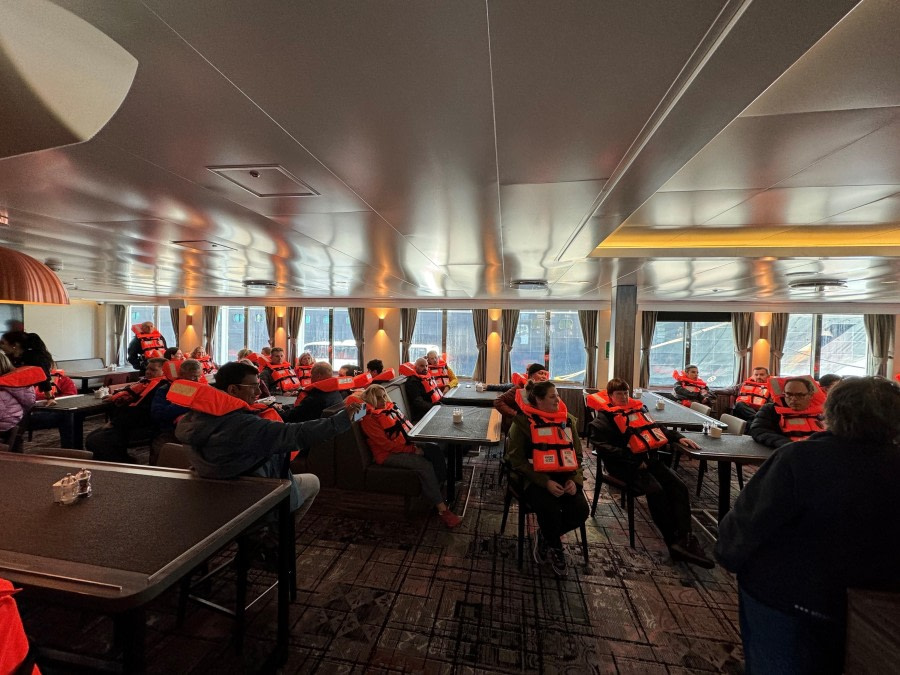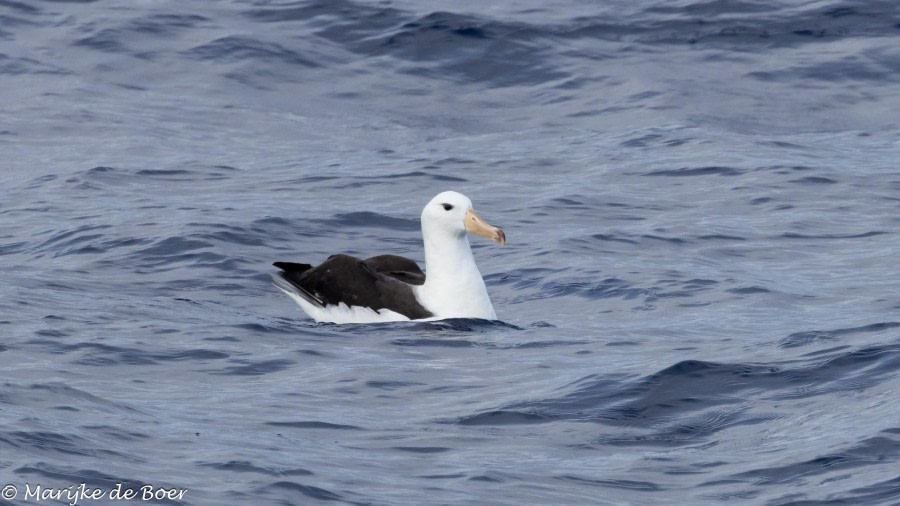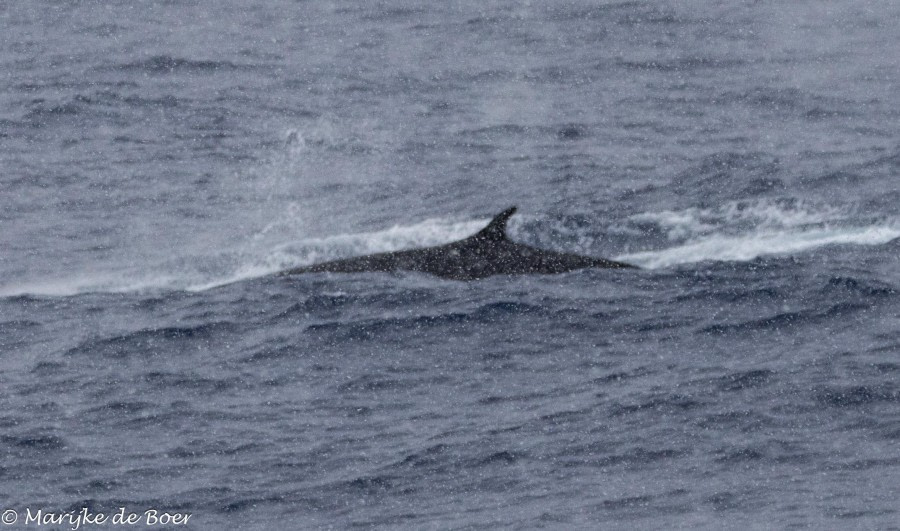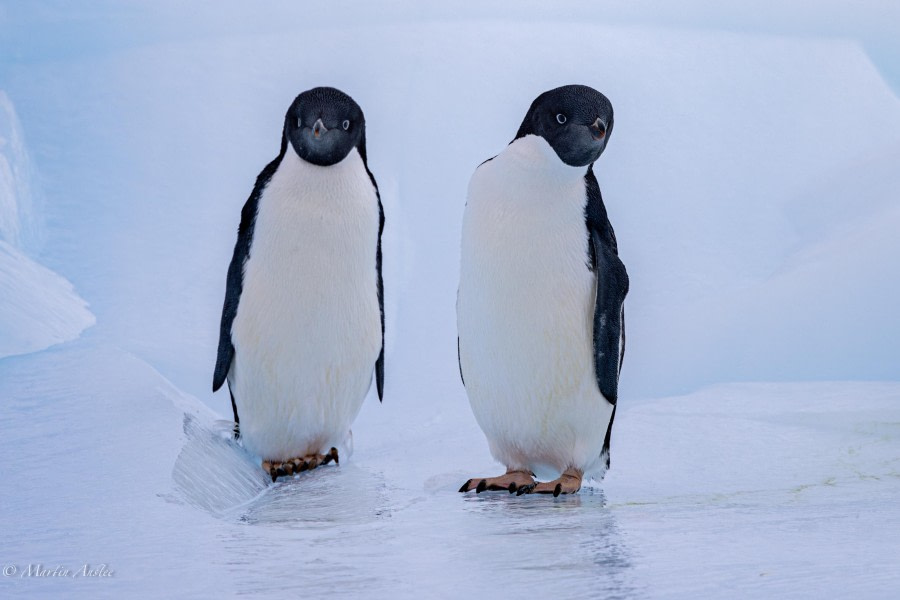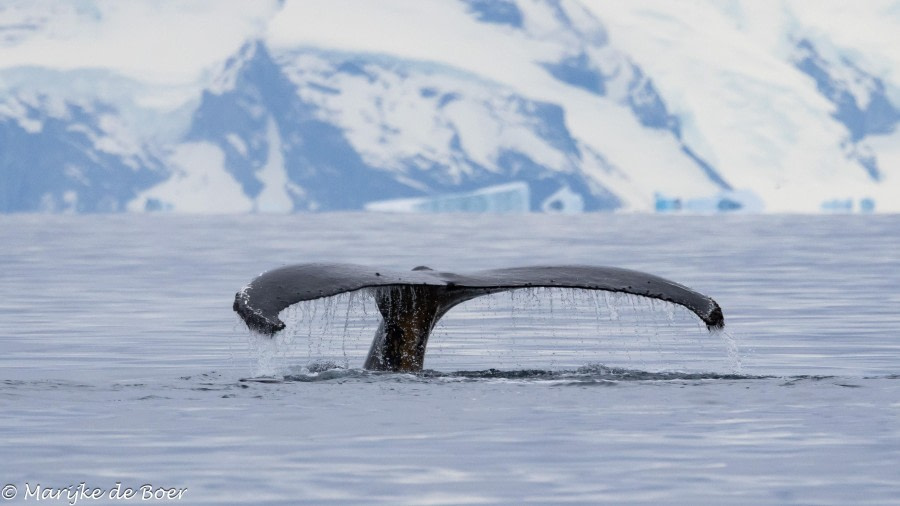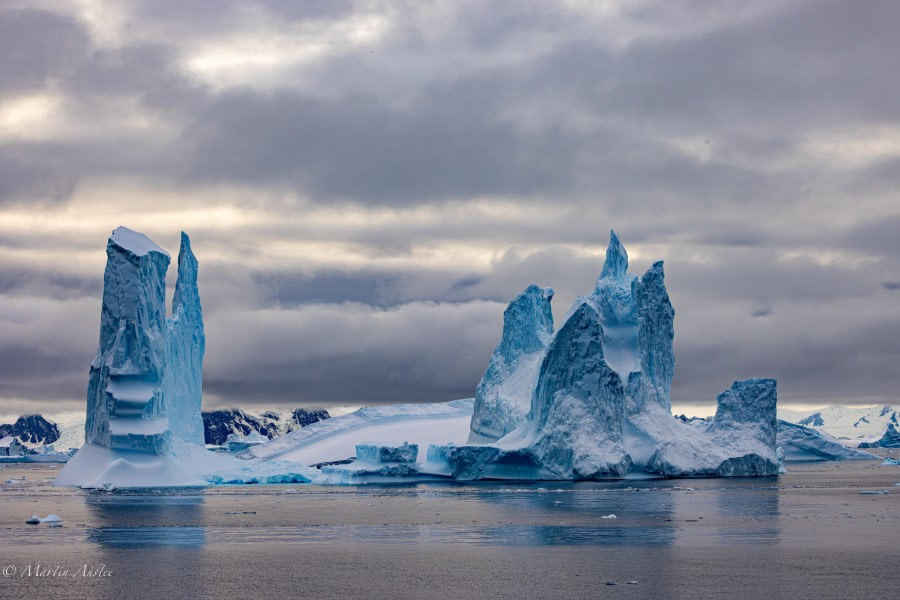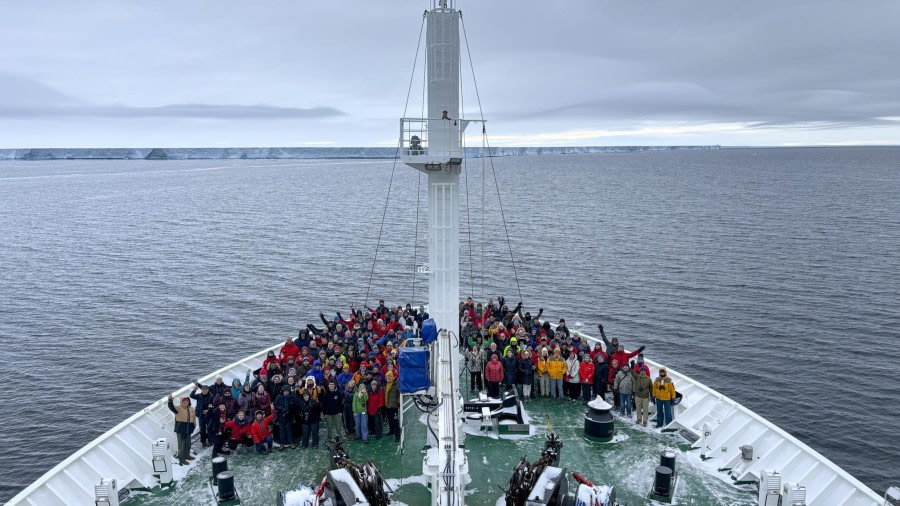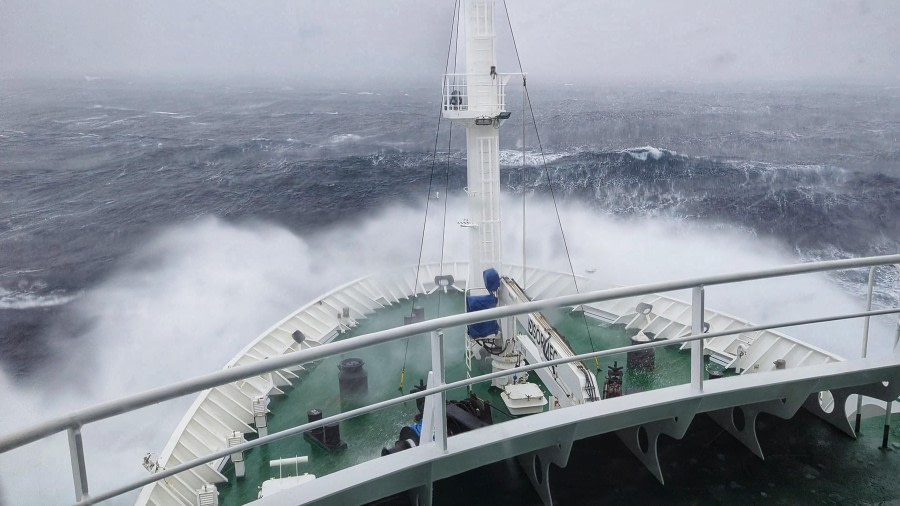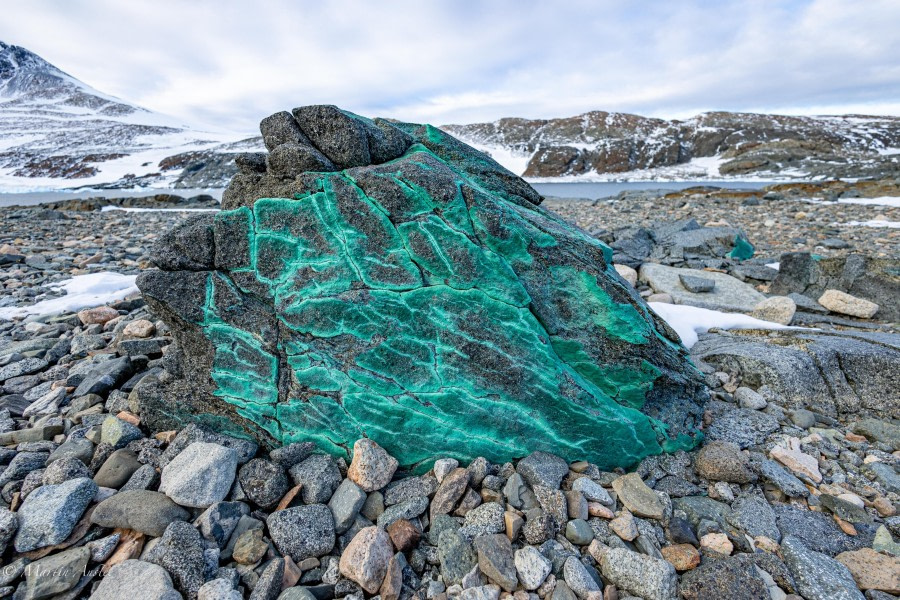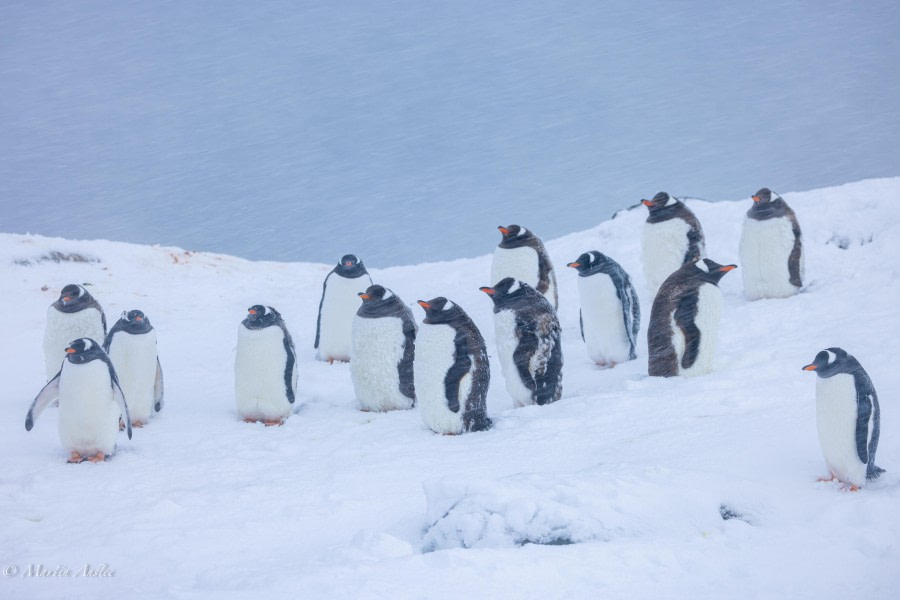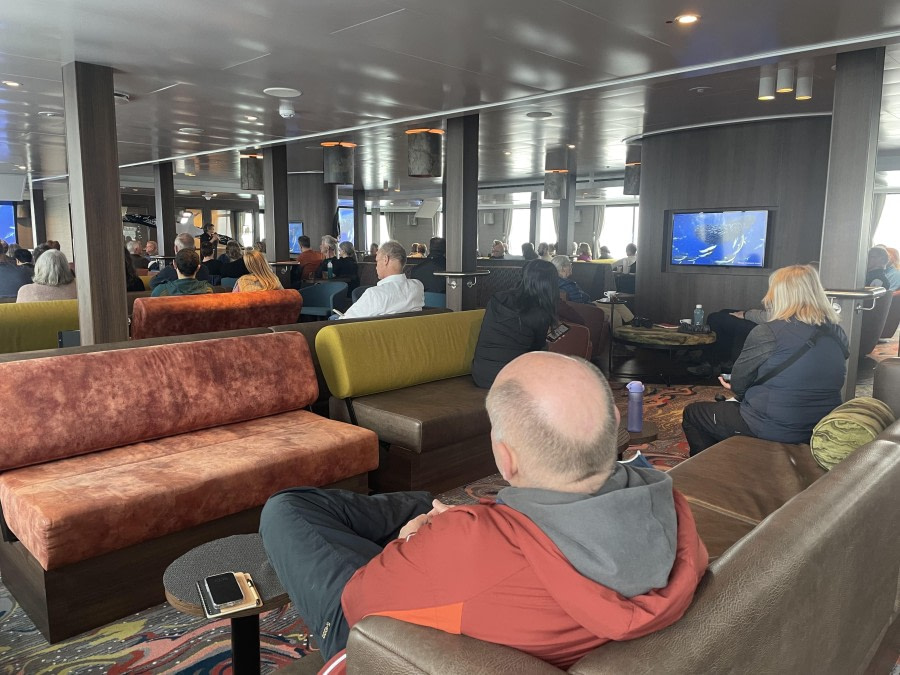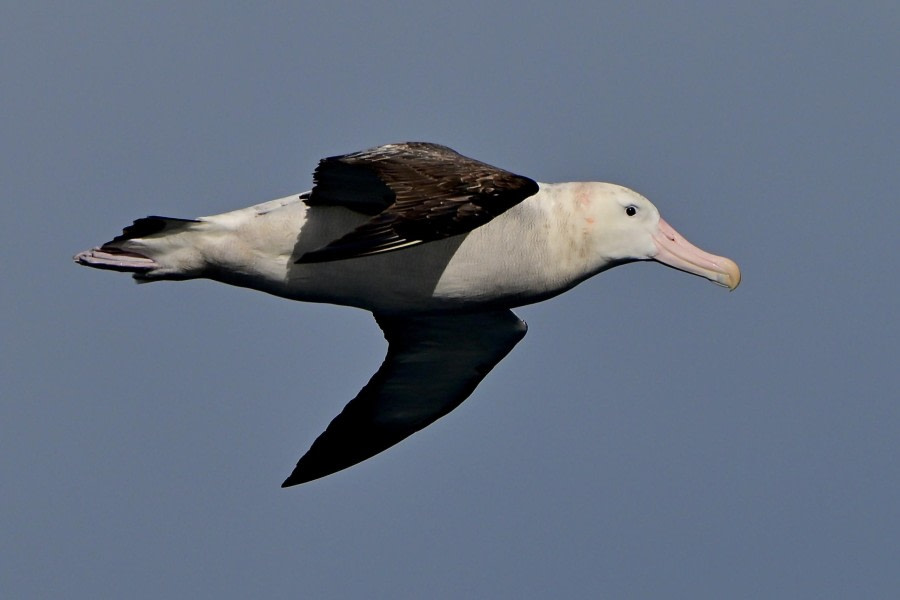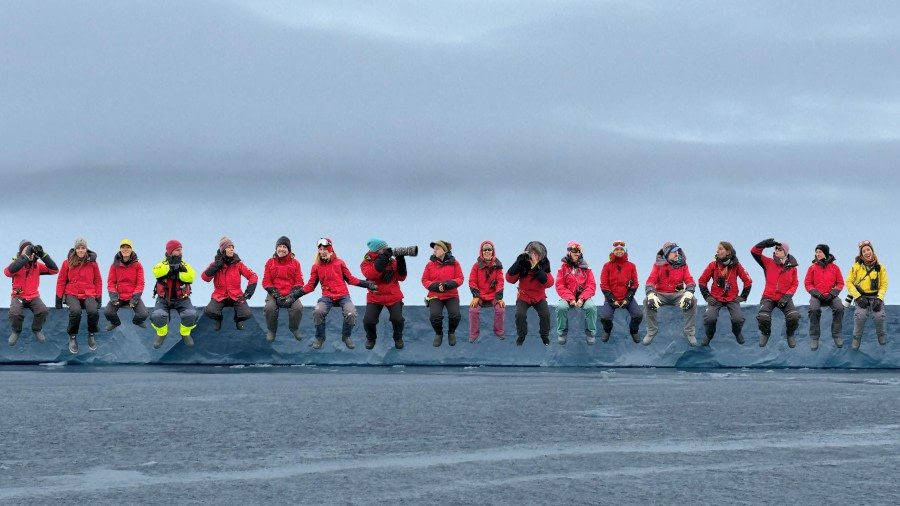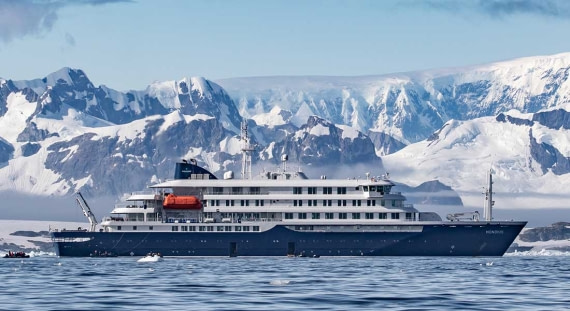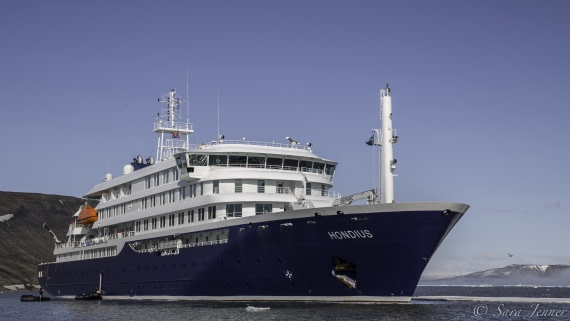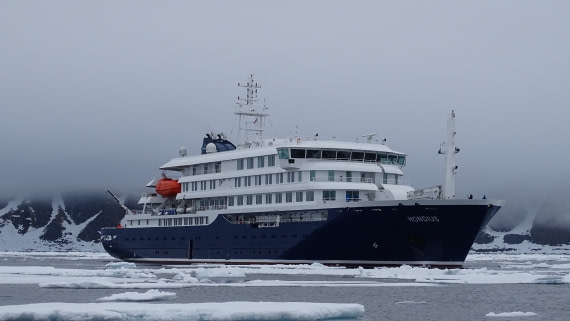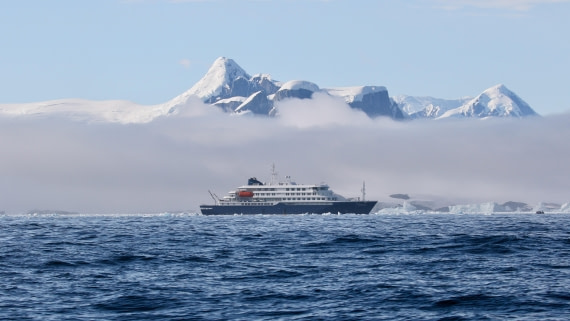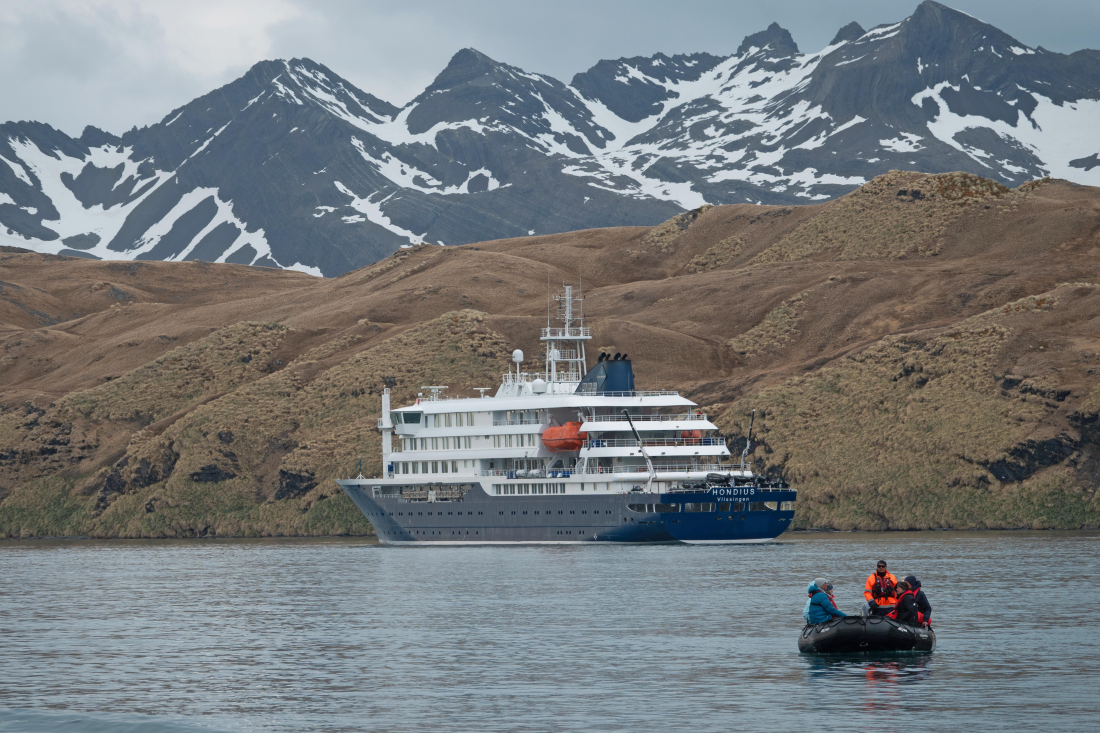| Fecha: |
19.03.2024 |
| Posición: |
69° 25.0 ’S / 072° 15.5’W |
| Viento: |
S 1 |
| Clima: |
Overcast |
| Temperatura del Aire: |
-3 |
"Into the unknown!" – That was our motto since yesterday evening. Never before had any Oceanwide Expeditions vessel ventured so far south. And it was just the beginning of our journey through uncharted waters towards the Wilkins Ice Shelf.
The morning proved exceptionally calm, even more so than the day before. A smooth, mirror-like surface of water and hundreds, if not thousands, of icebergs – such was the backdrop through which the Hondius advanced into Lazarev Bay. Incidentally, the bay was named after Mikhail Lazarev, the great Russian navigator, who along with Faddey Bellingshausen in the distant year of 1820 became the first in history to set eyes on the shores of the mysterious white continent – Antarctica.
Operating in expedition mode, we had only a rough plan for today. In the morning, Georgina was supposed to give us a lecture on the intricacies of wildlife photography, but just as the projector and microphone were turned on, and we gathered in the observation lounge to listen to her speeches, suddenly through the speakers came the voice of Pippa, our expedition leader, delivering wonderful news – we had managed to spot an Emperor penguin!
We rushed out onto the open decks and pressed ourselves against the windows to catch a glimpse of this rare bird. However, the sight that met our eyes was rather tragicomic. Indeed, there sat the emperor penguin on the iceberg, there was no doubt about it. The unfortunate creature, facing away from us, awkwardly clung to the nearly vertical ice wall and was afraid to move, lest it slip into the water.
At first, we were surprised by the penguin's behavior, but soon the explanation became evident as a massive leopard seal appeared before us, circling the iceberg, and repeatedly attempting to leap out of the water to grab the penguin with its teeth. Clicking its jaws and terrifying the already frightened penguin even more, the leopard seal persisted, making new attempts to attack.
The Hondius paused for a moment, then resumed its course, and we left the penguin alone to face its fate. One can only hope that the vile reptile-looking predator left empty-handed.
Georgina never managed to start her lecture because as we continued, we spotted more and more Emperor penguins, either in the water or on icebergs. Cheers erupted, shutters clicked, and our binocular-equipped eyes eagerly followed these majestic creatures.
After lunch, it was decided to take advantage of the wonderful opportunity for a Zodiac cruise. The boats were lowered into the water, and we, settling into them, set off to explore Lazarev Bay.
Navigating around immense icebergs and occasionally pushing through brash ice, we admired the whimsical forms of ice and the numerous seals dozing on the ice floes. Some of the pinnipeds showed mutual interest and raised their heads, trying to get a better look at us. Mostly they were Crabeater seals, but among them, Weddell and leopard seals were also spotted.
One could endlessly traverse the cold waters, journeying through this magnificent iceberg garden, but after 2.5 hours, despite the absence of wind, we began to feel slightly chilled, so returning to the ship became a rather welcomed event.
The daily recap and dinner were not far behind, and soon the night descended so deeply that it was no longer possible to distinguish the icebergs, the ocean, or anything else. By this time, the Hondius had already left Lazarev Bay and was heading further south.
KAYAK DIARY
We have paddled along the Northeast shores of Rothschild Island. We paddled along the building size icebergs, all in different shades and blues. We have spotted tens of crabeaters seals on icebergs and four Weddell seals sleeping on the ice. Some of us also spotted emperor penguin twice in the water.

